Last Updated on January 24, 2023 by Dee
There is a lot of confusion between sketching vs drawing. People often use the terms interchangeably, but there are actually some crucial differences between the two art forms. In this article, we will take a look at 13 of the most critical distinctions between sketching and drawing.
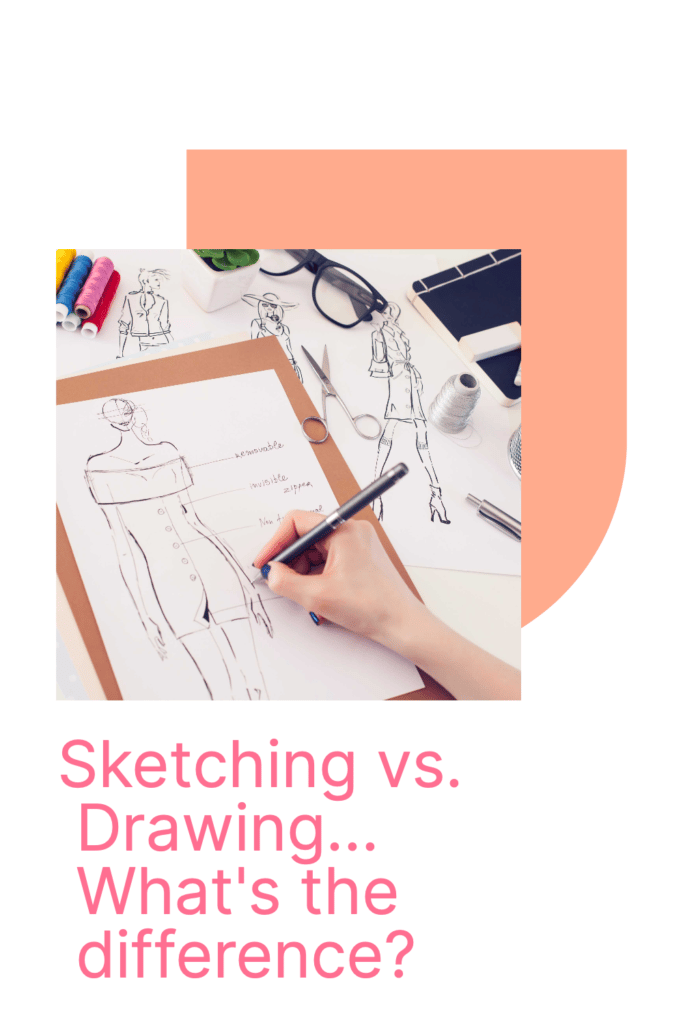
Sketching vs. Drawing: 13 Important Differences
1) Sketching is before drawing
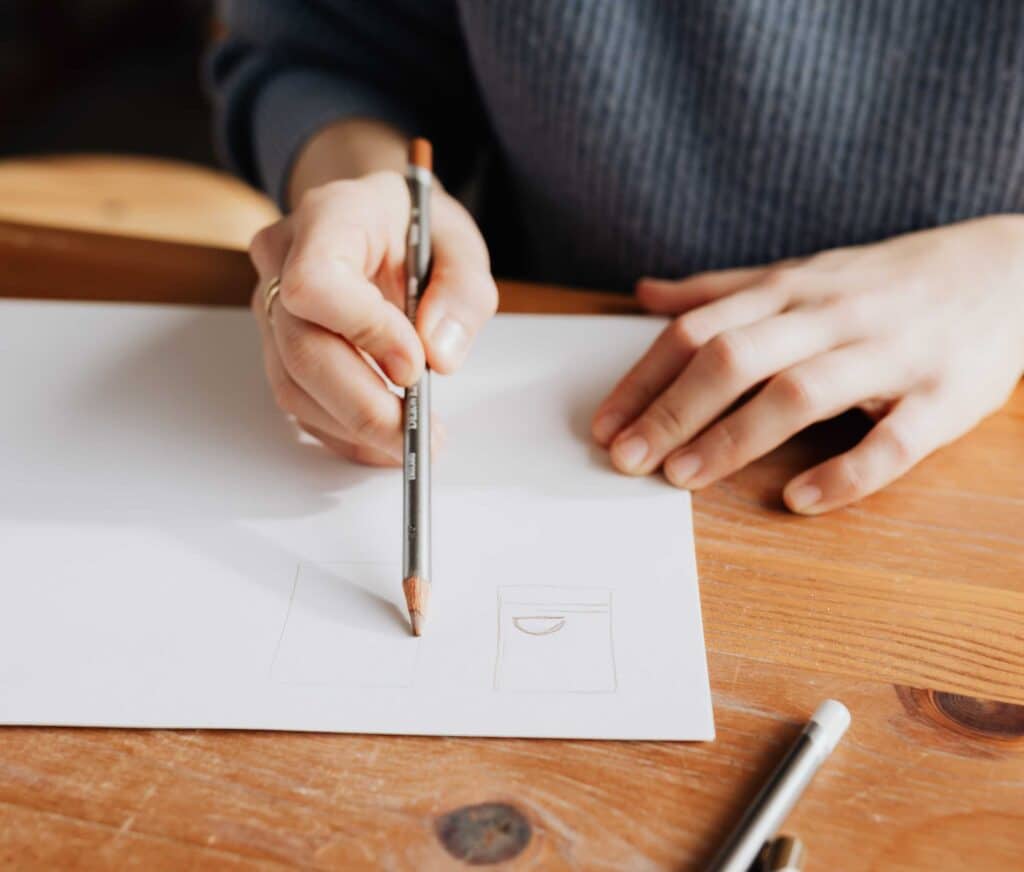
At the heart of sketching vs. drawing is one key difference: sketching comes before drawing.
Sketching can be thought of as a form of mapping out an idea or concept, while drawing is the refinement and finishing of those ideas.
Making sketch marks on paper can help clarify our thoughts and become a blueprint for the finished drawing that follows.
On the other hand, drawing is a way to define messy sketch lines and bring your idea to life in detail.
It’s a delicate dance between sketching and then refining through drawing that leads us to creative brilliance!
2) Sketching is loose, and drawing is detailed.
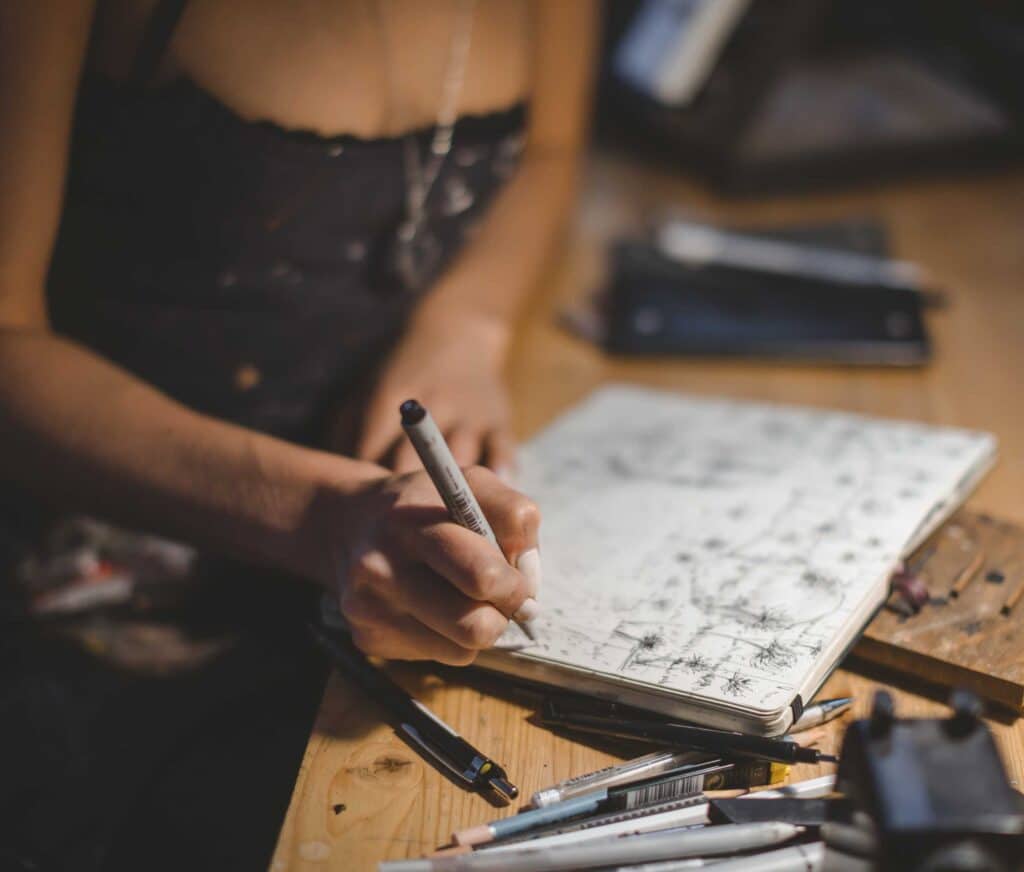
One of the key differences between sketching and drawing is that sketching is a more expressive, less detailed style of creating art.
Sketching can be used to capture a subject quickly and efficiently, with more emphasis on capturing lines and ideas than details.
On the other hand, drawing involves representing an object more precisely, usually with minute detailing and precision.
Drawings have a much different feel than sketches do – they aim to replicate reality rather than capture mere concepts.
This makes sketching especially important for artists who want to intuitively explore their creative flair or experiment with compositions until they find the perfect shape or angle for their final drawing.
In the art world, sketching vs. drawing is often thought of as two completely separate approaches – sketching for fun and exploring your ideas, whilst detailed drawing for replicating reality in all its fine detail!
[Related article: Best iPad for Drawing (2023)]
3) Sketches take less time than drawings.
Even though sketching is still an art form and requires creative thought, sketches are generally more raw or unfinished works compared to drawings. Finished drawings contain much more detail and precision.
For instance, if you are sketching from life, just a sketch can be done in mere minutes, depending on the complexity of the subject.
Whereas with drawings, there are much more time-consuming processes such as measuring, multiplying distances, shading, and more that you may need for proper perspective.
In either case, such artwork can hold equal admiration and respect – sketching just happens to be the less intense option when it comes to speed!
4) Sketches are smaller than drawings.
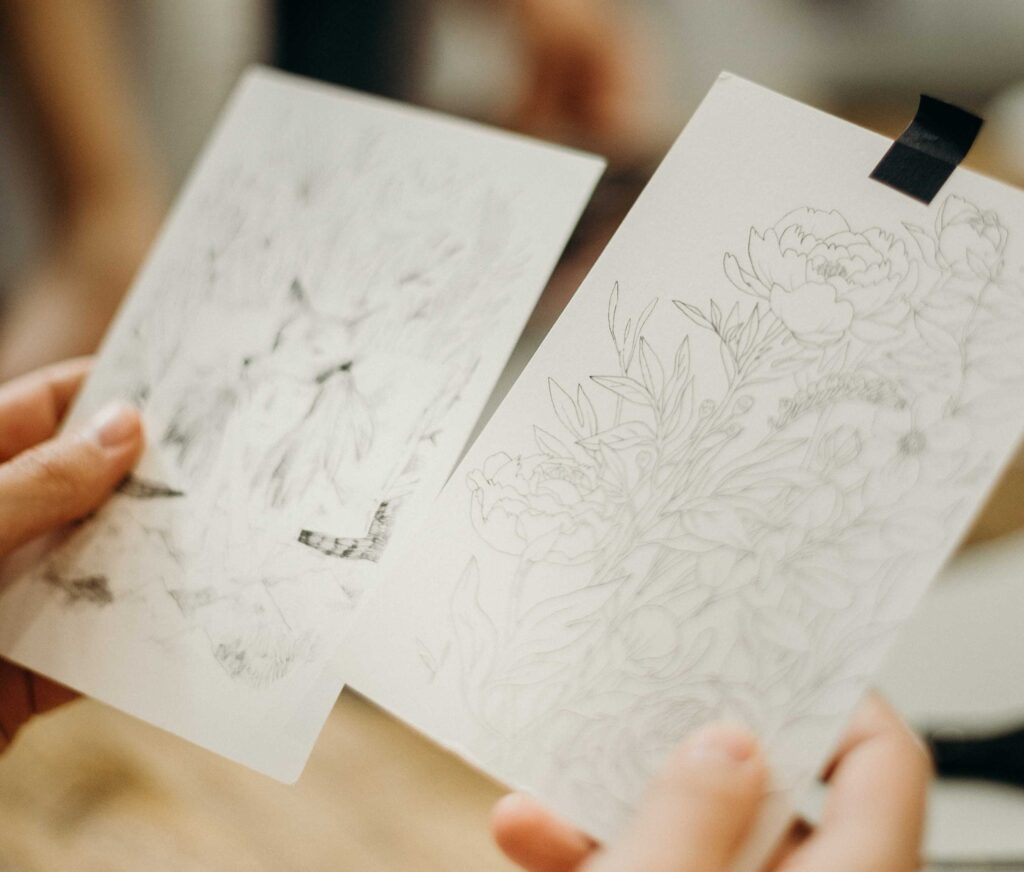
Sketching and drawing are two closely related artistic skills that involve representing a three-dimensional world on paper, but there is one major difference between them – sketching is typically smaller in scale than drawings!
While sketching can still be detailed and intricate, sketches tend to remain generally small. Many sketches often include a thumbnail sketch which is a quick sketch of the finished work.
This allows for quick sketching sessions and fast ideas that come to life in just minutes.
On the other hand, drawings tend to be larger because of the more time-consuming details included in the artwork.
Furthermore, size also affects how much time it takes for an artist to complete an artwork – because sketching is generally quicker and simpler, it presents fewer potential difficulties than a larger drawing would.
5) You need fewer tools for sketching.
Artists sketch to capture their passion on paper quickly, with fewer drawing tools.
On the other hand, drawing is an intricate process that often involves more than a few sketching implements like multiple charcoal sticks, pens, erasers, and different colors of pencils or markers.
Drawing also requires more precision and control, emphasizing details over the exploration of sketching possibilities.
For example, sketching might use simple lines in quick brushstrokes without a worry for details, while drawing can involve adding finishes to the sketch.
However, unfinished sketches can develop into more detailed drawings as the artist refines their work, allowing them to utilize their full artistic range.
6) There are more types of drawing than sketching.
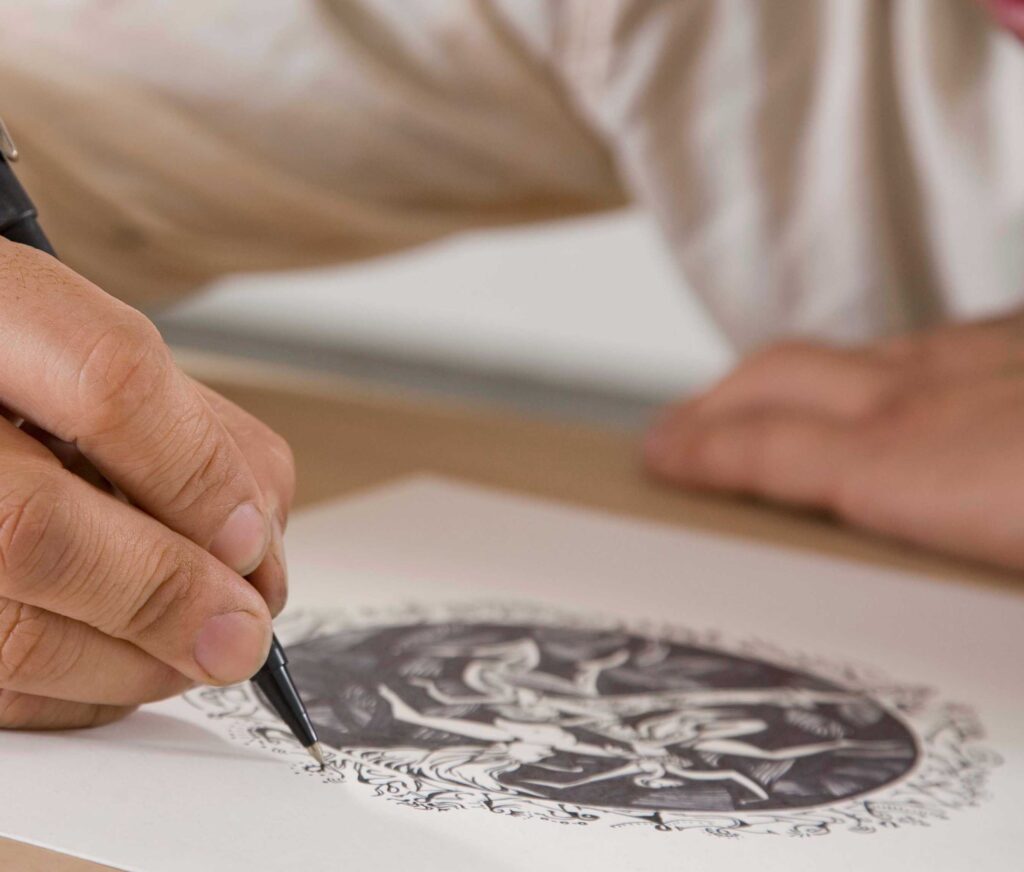
Drawings are more often detailed and fleshed-out pieces that include shading, perspective, hues, and other intricate details.
Drawing tends to have a much wider range of styles than sketching as it has multiple drawing techniques, such as line art, cartoons, and comics, abstract, or realism.
You can sketch almost anything you want due to its freeform nature, but sketching doesn’t cut it when it comes down to creating something realistic or with specific details.
Drawings can be extremely engaging due to their high-level complexity, which sketching just cannot provide!
7) Sketching is casual, and drawing is serious.
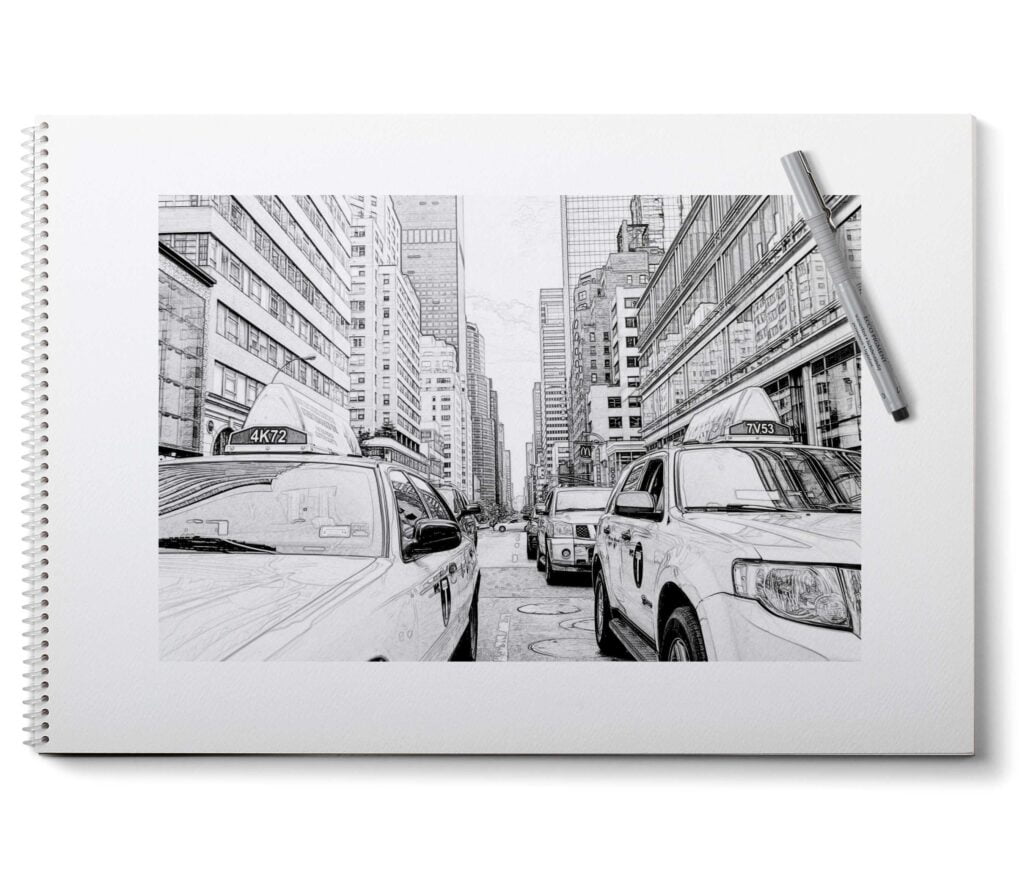
Whereas sketching is a more casual and free-flowing art form used to quickly sketch ideas and don’t necessarily need to be refined or perfected, drawing is a more serious endeavor that constructs an artwork piece by piece.
8) Drawing requires more skill than sketching.
Drawing can be a great way to express your creativity, but it can also take a lot of time and effort.
While sketching is a more relaxed and casual drawing technique that allows artists to quickly sketch ideas without much detail, drawing requires a bit more skill as the artist must be able to bring their images to life with precision and detail that sketching does not necessitate.
Drawing is often used when the end product is meant to recreate the real world or look very realistic in nature while sketching works great for quick idea generation or sketching out concepts that don’t need refinement.
Both techniques require their own special talents, and it’s important to master each one if you aim to become a proficient artist!
9) Drawing is precise, and sketching is fluid.
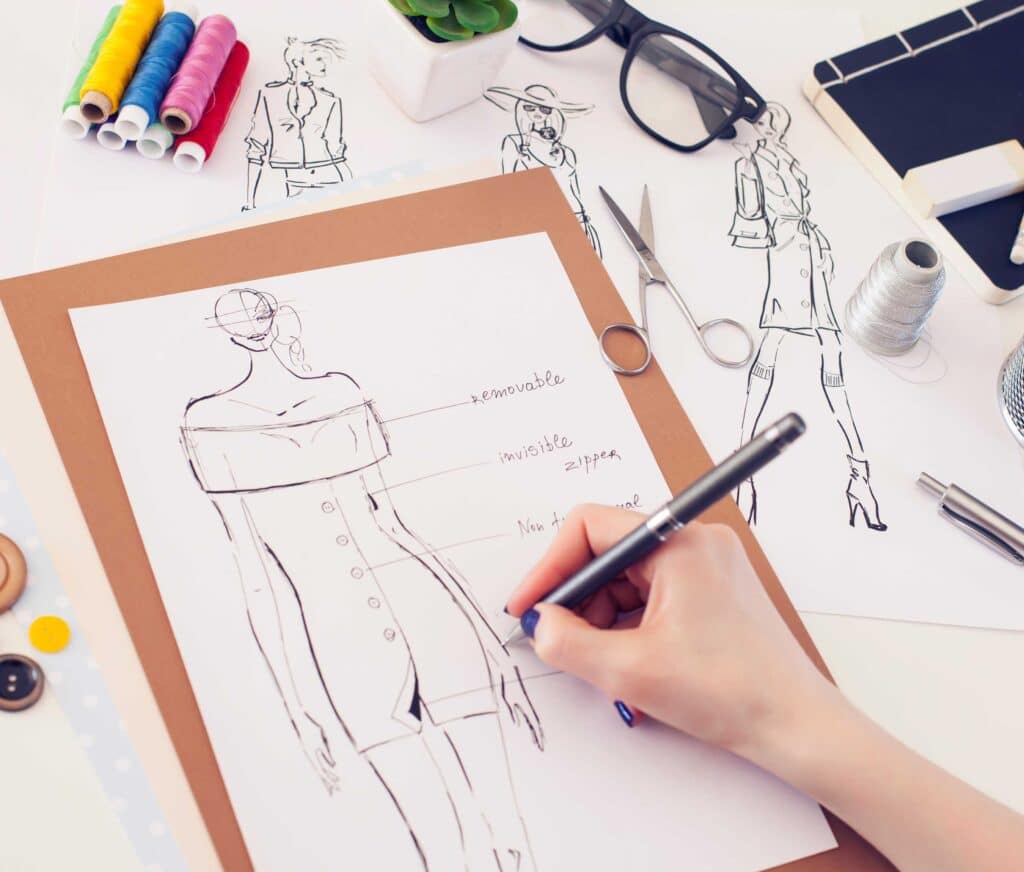
Drawing allows for intricate detail and accuracy, while sketching revolves more around fluidity and ease of movement.
For sketching, you can work with a variety of tools, such as charcoal and pencils, while having lots of freedom in how you use your materials.
If you want to learn sketching techniques quickly and easily, it’s ideal for laying out topics in light strokes and sticky erasing techniques.
On the other hand, when sketching requires precision, drawing often shows you the bigger picture in crisp concepts.
With drawing, it is important to keep your lines steady and consistent. When using pencils or pens for sketching or drawing projects, always center on flow rather than form!
10) Sketching focuses on composition, while drawing focuses on realism.
Sketching is all about composition; it’s a great way to get creative ideas out without worrying about perfect realism.
When you’re sketching, your primary aim is to convey an idea or emotion that speaks for itself on paper.
Drawing, on the other hand, focuses more on achieving a realistic version of an idea.
Attention to detail must be paid when working on a drawing project – from shading to perspective; each element will contribute to the finished look.
For artists looking for a faster way to express their creativity in drawings, sketching can provide an easy artistic outlet while still having enough structure and form to convey abstract thought.
11) Coloring is usually not part of sketching but can be part of drawing.
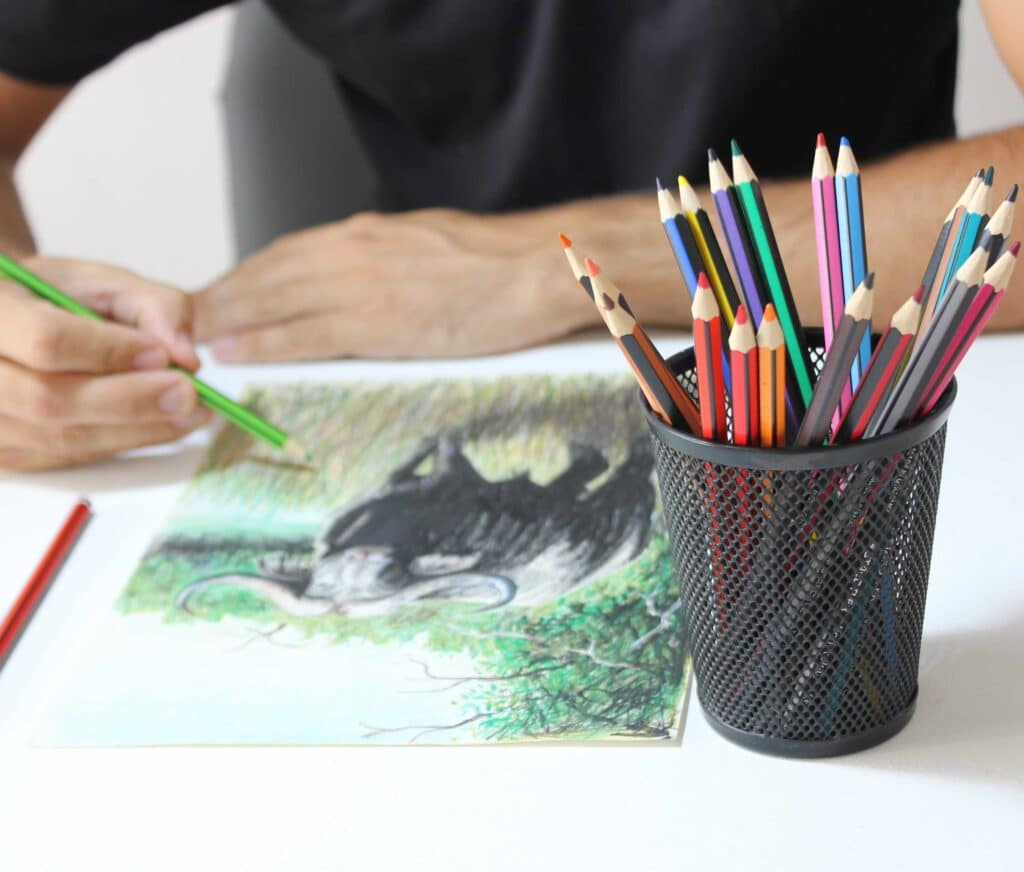
When it comes to sketching, coloring rarely plays a part in this creative process, as sketches are typically thought of as rough and unfinished works of art meant for further development.
On the other hand, adding color (with pencil crayons, paint, or other art material) is considered an essential piece of artwork that creates an added level of detail and dimension when drawing a picture.
Master artists use all sorts of art materials, from colored pencils to watercolor paint, to color their finished piece.
Whether you prefer sketching or drawing, adding color can transform any piece of your artistic expression into something truly amazing.
12) Sketching is typically done with pencils, while drawing can use any medium.
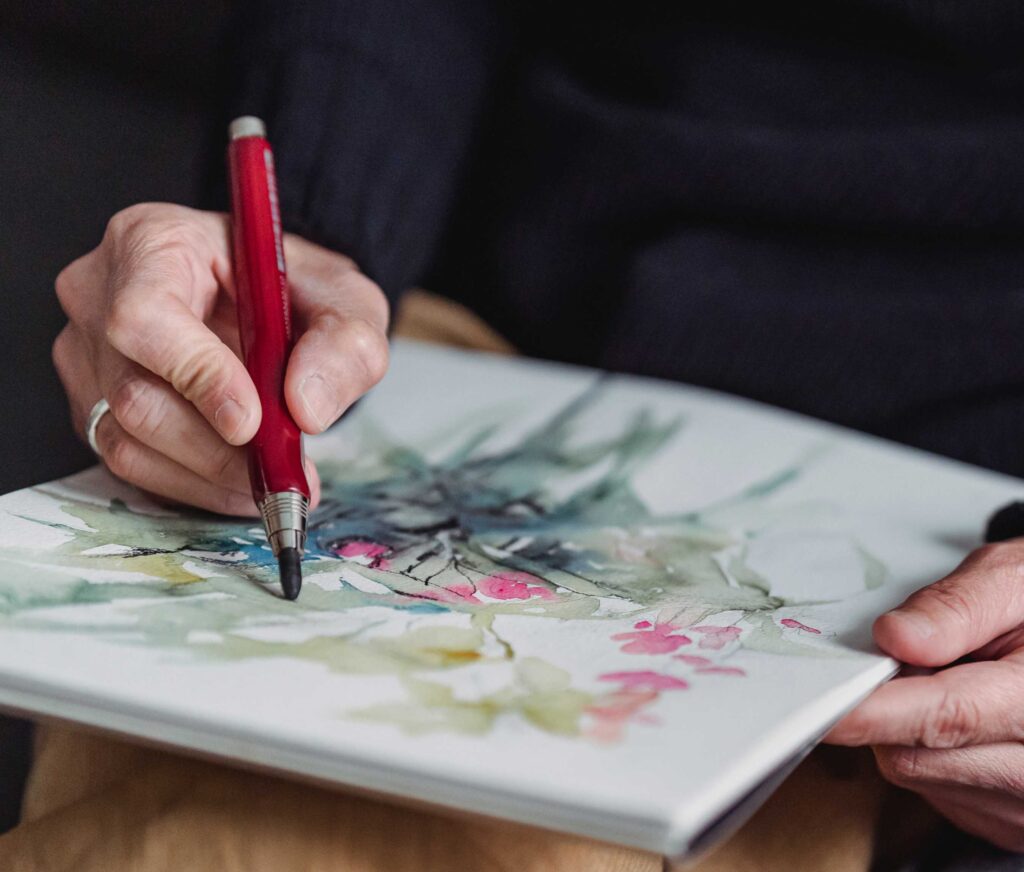
Sketches are creative expressions of our thoughts, feelings, and ideas on paper.
They’re the starting point for drawings and designs and a great way to visually document what we come up with in the studio.
Sketching is an extremely accessible art form since you only need a pencil or pen to get started – sure, if you want, you can delve into special supplies like feather quills and dip-pens, but when starting out, all you need is a simple #2 pencil.
On the other hand, drawing requires different mediums as it’s a more developed style of art that has been around for centuries; graphite or charcoal pencils, ink pens, and paints can all be used to draw.
Many artists prefer to focus solely on sketching, while others work from sketches and then switch to ink and brushwork for their finished pieces.
13) Sketches Are Incomplete – Drawings Are Complete.
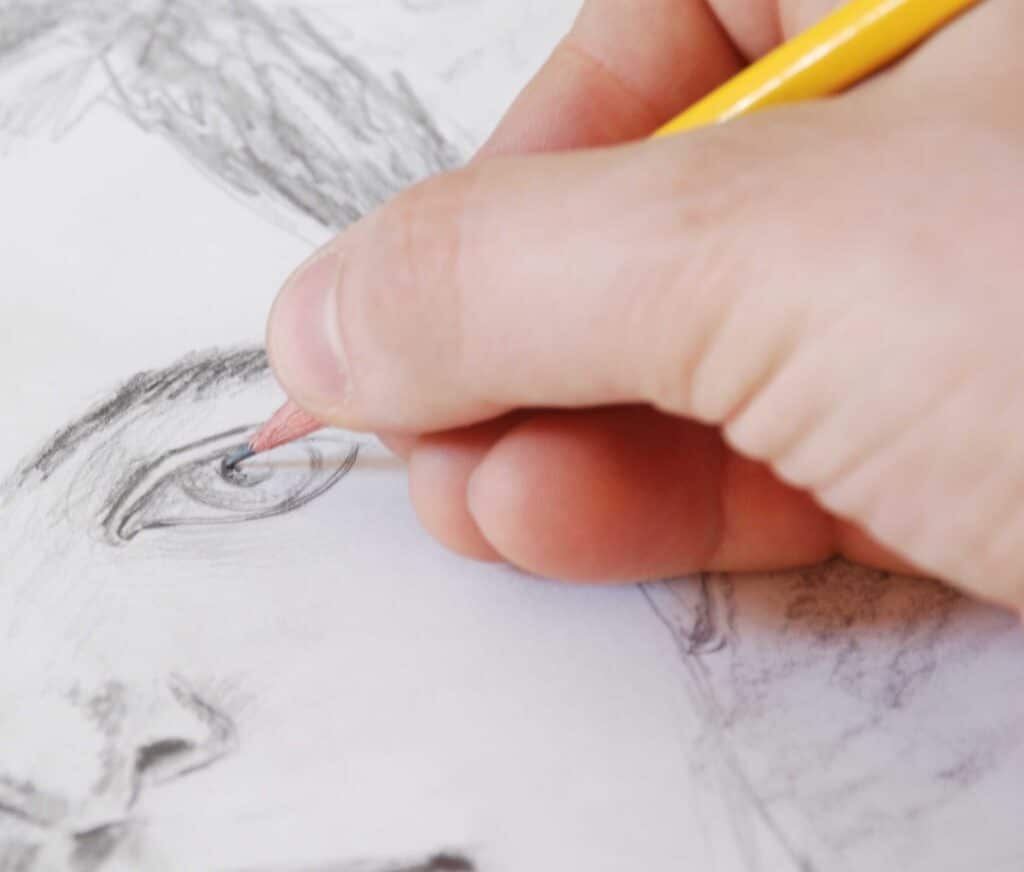
Sketching is considered a quick and incomplete form of art. Sketches tend to be work that happens during the planning stages of an artist’s work and can include outlines, basic shapes, or notations that an artist quickly jots down as they are working out an idea.
On the other hand, a drawing is usually more detailed and finished. The lines in a drawing tend to look more defined or bolder, and textures can show differently than in a sketch.
Sketching is a great way for beginner artists to jump into visual creation because you don’t have to worry about making mistakes or “ruining” the piece – sketches are naturally seen as unfinished works!
What is the difference between freehand sketching and artistic drawing?
Freehand sketching and artistic drawing both require the use of a pencil or other art instrument; however, they activate completely different parts of the creative process.
Freehand sketching is more about capturing an idea quickly, using non-conventional tools and materials like markers, pens, or crayons.
It’s oriented towards fast layers, and its result can be loose and organic in look.
On the other hand, artistic drawing requires more time since it’s all about detailing and accuracy.
In this case, pencils are preferred due to their precision potential, but rulers, erasers, and templates may also be used to reproduce a certain subject with strict fidelity.
Both styles will result in beautiful artwork when properly executed though, so no matter which technique you choose, your work of art can ignite amazing emotions!
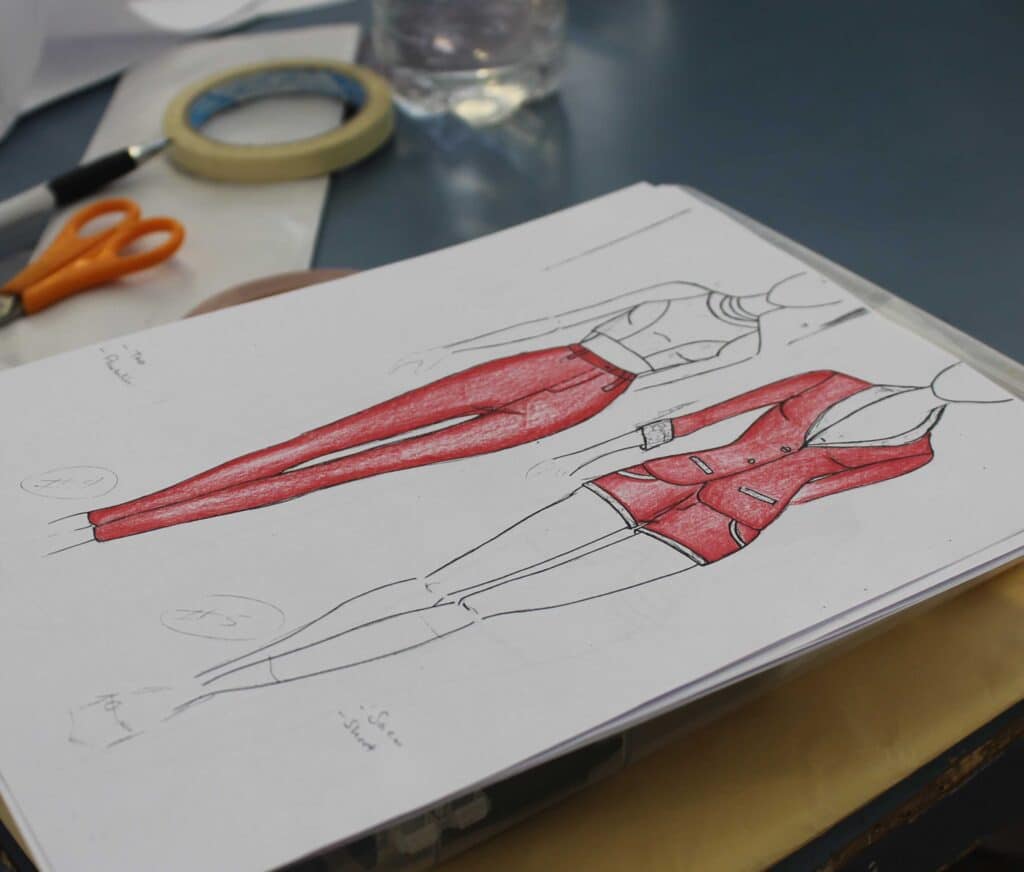
Sketching versus Drawing: Mediums and Surfaces
When it comes to artistic expression, sketching and drawing can be two of the most compelling ways to convey emotion and ideas.
In fact, choices of mediums and surfaces can greatly affect the outcome of your sketches and drawings.
Graphite pencils are a commonly used tool for drawing, offering a wide range of values from light to dark.
Soft pastels offer an exciting burst of color with buttery-smooth blending properties. Ink pens bring uniform lines to create beautiful artworks that have a unique look all their own.
Drawing paper is the most common surface used for sketching, although there are options like canvas or stone!
When sketching, the options for mediums and surfaces are almost limitless – from pencils to oils to paper, canvas, or boards.
The popular belief is generally that sketches are done in pencil on paper, but it doesn’t always have to be that way.
Drawing offers several different mediums, such as charcoal, ink, and pastels, but is typically done on surfaces such as bristol board or illustration board.
Ultimately, deciding which medium and surface will be used for sketching or drawing will depend on personal preference and the results you’re looking for.
Given these two art practices can create very different tones and moods, it’s always worth exploring all your medium/surface options before mapping out a course of action so you can ensure that everyone has their own unique style and signature vibe!
Each material offers something different, so exploring what works best for your artwork is key when creating truly stunning pieces — whether you’re sketching or drawing!
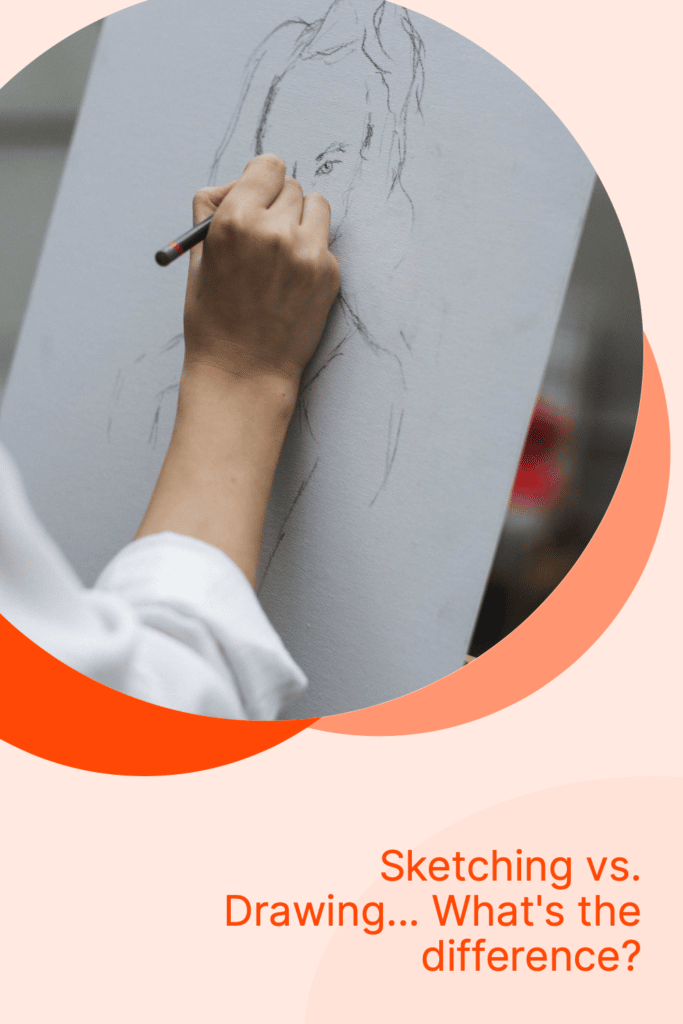
Frequently Asked Questions about Sketching vs Drawing…
What are the 3 types of drawing?
Drawing is one of the oldest forms of art, and with age comes three main distinct styles. These types are gesture drawing, contour drawing, and blind contour drawing.
Gesture drawings are those that capture the broad movements and shapes in the character or landscape being drawn.
Contour drawing focuses on the outlines of the subject, including all variations in surface textures and details within.
Blind contour drawing removes an element of visual connection between hand and eye as you draw something without looking at your paper.
Whether you’re a beginner looking for a form of expression or a professional illustrator trying to find their style, these three types of drawing can feed any artist’s creative needs!
What does sketching mean in drawing?
Sketching is a form of art that means differently to many people. Some may think of it as a technique to quickly come up with ideas and a way to explore their creativity.
For others, sketching may be the first step when they’re creating drawings, sketches, and illustrations – practice makes perfect, after all!
The most important thing I’ve learned from sketching is that there are no rules or boundaries.
It’s freehand and often takes time to get results you deem ‘happy,’ but once you gain confidence with drawing, nothing stops you from expressing yourself on paper!
Is a sketch a drawing?
Absolutely! A sketch is undeniably a form of drawing that serves multiple purposes.
Whether it’s used to capture the essence of a live moment in time or to record a fleeting idea as an artist experiments and develops their technique, it’s just another type of artistry made with a pen, marker, or pencil.
Sketches are like snapshots of an artist’s thoughts and feelings; they provide the foundation for more in-depth drawings and serve a crucial role within the artistic community.
Sketching should never be underestimated – after all, its little strokes are what craft masterpieces!
What should I draw or sketch?
Don’t overthink it when it comes to what to draw or sketch – try letting your imagination float free and see what makes its way onto the page!
You never know whether you are an experienced artist or a beginner until you try it.
If abstract art has always appealed to you, why not put pen to paper and let the colors, shapes, and lines take form?
Or maybe your strength lies in portraiture – consider taking out your pencils and attempting a realistic portrait of one of your favorite people.
Maybe celebrating beauty found in nature is more up your alley – so grab an ink pen and start sketching the leaves that hold such intricate beauty.
No matter what you decide on for the subject matter, unleash your creative energy and create something special!
What is the difference between sketching and drawing in engineering?
Sketching and drawing are essential elements of engineering design, but they are not the same. Technical drawing in engineering also called architectural drawing.
Sketching is usually done free-hand and is used to capture ideas quickly.
It provides a pictorial representation of the design. On the other hand, drawing is more detailed in that it requires the use of technical tools like grids or rulers for straight lines and interlocking curves.
Drawing also involves understanding scale and perspective, as well as meeting aesthetic requirements specified by an engineer or client.
Sketches may evolve into drawings as ideas become clearer, but there is a definite distinction between sketching and drawing if you’re an engineer on a project.
What is the difference between a sketchbook and a drawing book?
Artists use sketchbooks and drawing books to hone their drawing skills, but their applications are quite distinct, each having its advantages.
Sketchbooks are invaluable tools for honing one’s craft; they usually have plain paper, if any at all, allowing an artist the full creative freedom to practice techniques and explore ideas freely.
Drawing books feature thicker paper, usually printed with designs or templates that make it easy to draw common shapes like grids, cartoons, letters, and figures.
A sketchbook is more suitable for practicing, while a drawing book can be used to finish almost complete drawings.
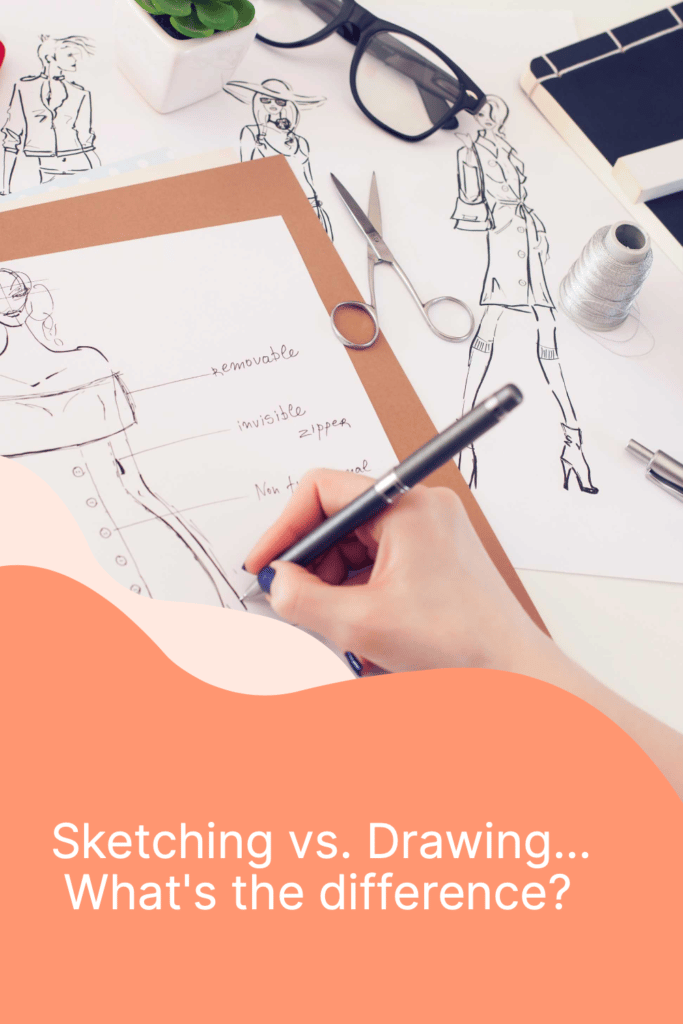
Conclusion
Sketching and drawing are two important skills for any artist to master. And while they may seem similar at first glance, there are actually some key distinctions between the two art forms. In this article, we have looked at 13 of the most critical differences between sketching vs drawing.
So the next time you pick up a pencil or brush, take a moment to think about which one of these techniques you want to use. And remember, practice makes perfect! With enough time and effort, you will be able to master both sketching and drawing.
Other articles you may enjoy…
59 Aesthetic Things to Draw: Art Ideas for Creative Minds
How to Get Ideas for Drawing: 31 Ways to Find Unique Ideas
Looking for a Drawing Kit? 13 Top Drawing Kits & What you Need to Consider Before Buying One.
The Best Paper for Ink Drawing: 10 Sheets That Work Wonders
18 Texture Drawing Examples to Help You Get Inspired: How to Draw Texture
How to Store Drawings: Tips & Tricks for Keeping Your Artwork Safe
